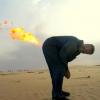this is my first of its kind experience.
Hoping that everyone would connect to my query at hand.
i just need to know how a particular equipment (in my case a stabilizer column) could work under two different pressure.
or to be more clear, how does a column working in say, (x1 bar/top) and (x2 bar/bottom) benifit the sabilizing process??
if anyone out there would spare a moment.
hoping i was precise in presenting my doubt.

 FB
FB









